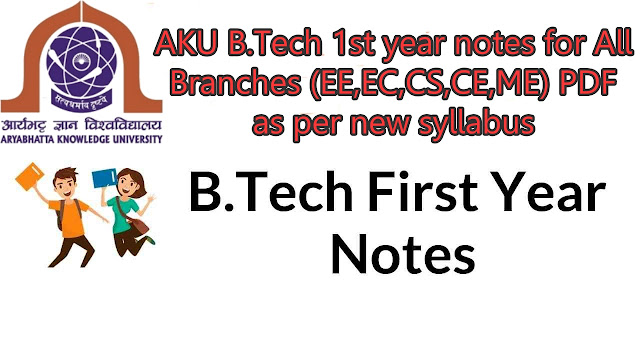NPTEL Introduction To Internet Of Things (IoT) Week 4 Assignment Answers 2024
Welcome to the elucidating journey through NPTEL Introduction To Internet Of Things Week 4 Assignment Answers 2024. In this guide, we delve into the intricate details of the fourth week's assignments, offering clarity, guidance, and expert tips to navigate through the challenges and grasp the essence of IoT. Let's embark on this enriching expedition!
Understanding NPTEL Introduction To Internet Of Things Week 4 Assignment
In this section, we unravel the core components of the NPTEL Introduction To Internet Of Things Week 4 Assignment, deciphering its objectives, requirements, and significance. Gain a profound understanding of the assignment's scope and expectations to optimize your performance and outcomes.
NOTE:- Answers will be updated shortly and it will be notified in our Youtube & Telegram Group. So Join Now
1. State whether the following statement is true or false. Statement: Coverage in WSN is defined as the area-of-interest is covered satisfactorily.
a. True
b. False
Answer: b. False
2. If transmission range >= 2* sensing range,
a. Coverage implies greater coverage
b. Coverage implies connectivity
c. Both (a) and (b)
d. None of these
Answer: c. Both (a) and (b)
3. The two types of reporting in WSN are –
a. Event driven and machine driven
b. Event driven and weather driven
c. Event driven and on demand
d. None of these
Answer: c. Event driven and on demand
4. The objective of coverage in WSN is to use a ___ number of sensors and ___ the network lifetime.
a. minimum, minimize
b. minimum, maximize
c. maximum, minimize
d. maximum, maximize
Answer: b. minimum, maximize
5. Select the correct option.
The disadvantages of stationary Wireless Sensor Networks are –
Statement-I: Node failure may result in partition of networks.
Statement-II: Topology cannot change automatically.
a. Statement-I True, Statement-II False
b. Both Statements are False
c. Both Statements are True
d. None of these
Answer: c. Both Statements are True
6. A _____ in MWSN moves in order to collect data from sensor nodes and goes to the sink and delivers the collected data from different sensor nodes.
a. Drop
b. Molecule
c. Mule
d. None of these
Answer: c. Mule
7. ____ allows distributed sensing carried by humans and the goal is not just to collect data but to allow the common people to assess and share the knowledge.
a. Voluntary sensing
b. Compressive sensing
c. Dynamic sensing
d. Participatory sensing
Answer: d. Participatory sensing
8. Which of the following is/are NOT feature/features of UAV networks?
a. Mesh or star networks
b. Multi-tasking
c. Large coverage area
d. None of these
Answer: a. Mesh or star networks
9. Which of the following is NOT a UAV network constraint?
a. Frequent link breakages
b. Prone to malfunction
c. Very Complex
d. None of these
Answer: d. None of these
10. In _________ configuration, UAVs form multiple star topology. One node from each group connects to the ground station.
a. Multi-star
b. Ring
c. Both (a) and (b)
d. None of these
Answer: a. Multi-star
11. The full form of FANET is?
a. Flying Ad Hoc Network
b. Fast Ad Hoc Network
c. Fidelity Ad Hoc Network
d. None of these
Answer: a. Flying Ad Hoc Network
12. Low-end sensor nodes are those-
a. Whose deployment has high density in order to increase network lifetime and survivability.
b. Who perform basic functions such as data aggregation, auto configuration, and power saving.
c. Both (a) and (b)
d. None of these
Answer: b. Who perform basic functions such as data aggregation, auto configuration, and power saving.
13. Which of the following are the components of the M2M ecosystem?
a. Trees
b. Ocean
c. Device Providers
d. Non-service users
Answer: c. Device Providers
Exploring IoT Fundamentals
Delve into the fundamental principles of Internet of Things (IoT), elucidating its definition, evolution, and real-world applications. Explore how IoT revolutionizes various industries, paving the way for innovation, efficiency, and connectivity in our digital era.
Leveraging Data Analytics in IoT
Discover the pivotal role of data analytics in IoT ecosystems, elucidating its importance, methodologies, and benefits. Uncover how data analysis drives informed decision-making, enhances operational efficiency, and unlocks valuable insights in IoT implementations.
Securing IoT Networks
Navigate the intricate landscape of IoT security, understanding the challenges, vulnerabilities, and best practices to safeguard IoT networks. Explore robust strategies and technologies to fortify IoT infrastructures against cyber threats and breaches, ensuring resilience and reliability.
Harnessing Cloud Computing in IoT
Unlock the potential of cloud computing in IoT deployments, exploring its capabilities, architectures, and integration strategies. Learn how cloud platforms empower IoT solutions with scalability, flexibility, and cost-efficiency, revolutionizing digital ecosystems worldwide.
Optimizing IoT Device Management
Master the art of IoT device management, delving into the intricacies of provisioning, monitoring, and maintaining IoT devices. Explore efficient techniques and tools to streamline device lifecycle management, ensuring optimal performance and reliability in IoT deployments.
NPTEL Introduction To Internet Of Things Week 4 Assignment Answers Insights
Gain valuable insights into NPTEL Introduction To Internet Of Things Week 4 Assignment Answers, uncovering expert tips, strategies, and solutions to tackle assignment tasks effectively. Leverage comprehensive guidance and resources to excel in your NPTEL journey.
Challenges and Solutions in NPTEL Week 4 Assignments
Explore common challenges encountered in NPTEL Week 4 Assignments and discover effective solutions and strategies to overcome them. Empower yourself with valuable insights and practical tips to navigate through assignment tasks with confidence and competence.
NPTEL Introduction To Internet Of Things Week 4 Assignment Answers 2024 FAQs
What are the key topics covered in NPTEL Introduction To Internet Of Things Week 4 Assignment?
The NPTEL Introduction To Internet Of Things Week 4 Assignment encompasses a wide range of topics, including IoT fundamentals, data analytics, security, cloud computing, and device management.
How can I prepare effectively for NPTEL Week 4 Assignments?
To prepare effectively for NPTEL Week 4 Assignments, it's essential to review the course materials thoroughly, engage actively in discussions and activities, seek clarification on concepts, and allocate sufficient time for assignment completion.
What resources are available to aid in NPTEL Week 4 Assignment preparation?
There are various resources available to aid in NPTEL Week 4 Assignment preparation, such as lecture notes, reference books, online tutorials, discussion forums, and supplemental materials provided by instructors.
How can I improve my performance in NPTEL Week 4 Assignments?
To improve your performance in NPTEL Week 4 Assignments, focus on understanding the underlying concepts, practicing problem-solving skills, seeking feedback from peers and instructors, and staying organized with your study schedule.
Are there any specific tips for tackling NPTEL Introduction To Internet Of Things Week 4 Assignment Answers?
For tackling NPTEL Introduction To Internet Of Things Week 4 Assignment Answers effectively, ensure you read the assignment instructions carefully, break down tasks into manageable steps, leverage relevant resources, and allocate time for revision and proofreading.
Where can I find additional support for NPTEL Week 4 Assignments?
You can find additional support for NPTEL Week 4 Assignments through online forums, study groups, peer collaboration, and reaching out to instructors for clarification and guidance.
Conclusion
In conclusion, NPTEL Introduction To Internet Of Things Week 4 Assignment Answers 2024 presents a fascinating opportunity to delve deeper into IoT concepts, applications, and challenges. By leveraging the insights and strategies outlined in this guide, you can navigate through the assignments with confidence, competence, and success.




